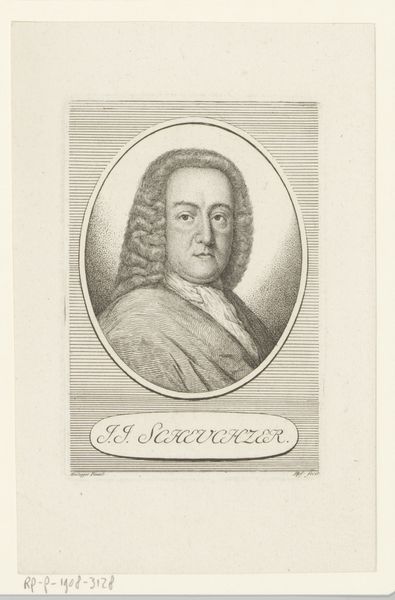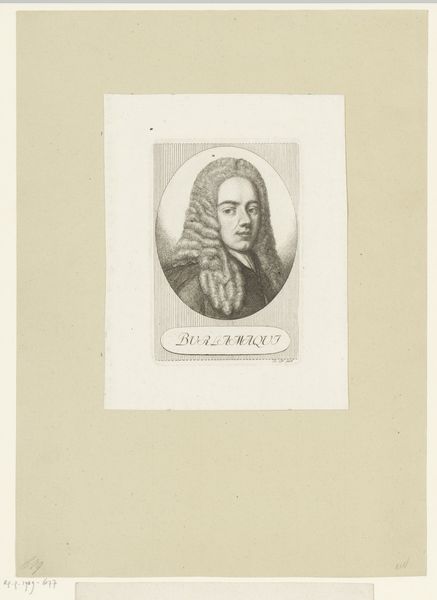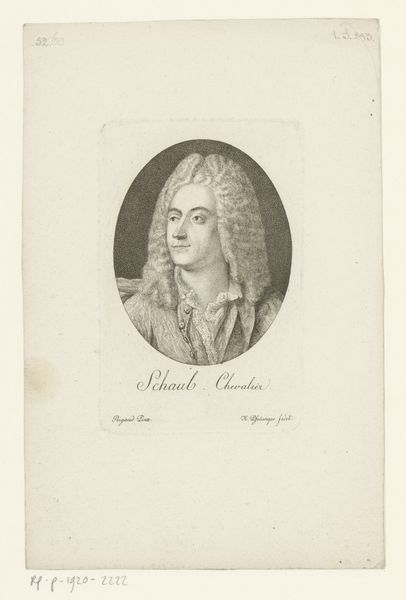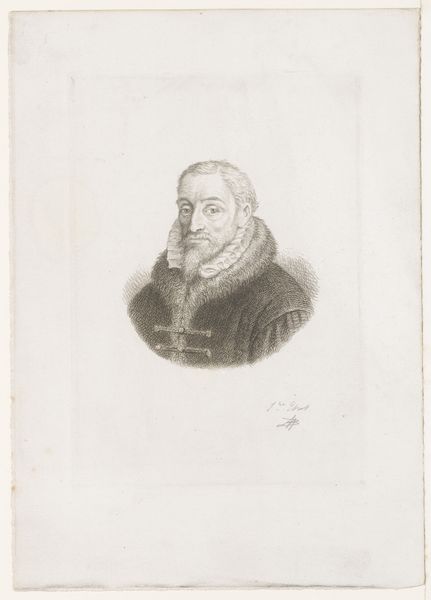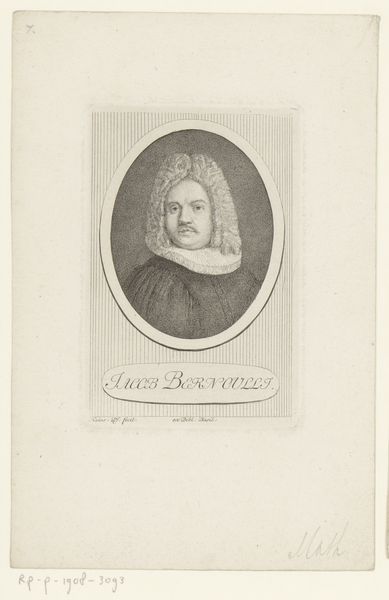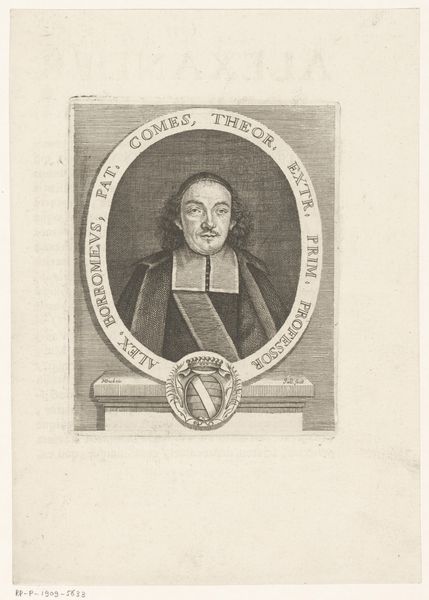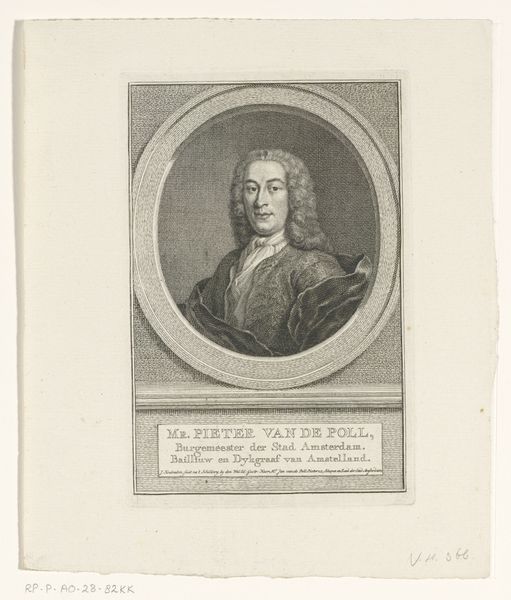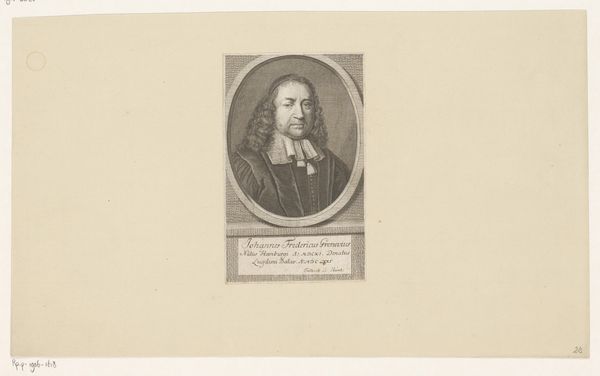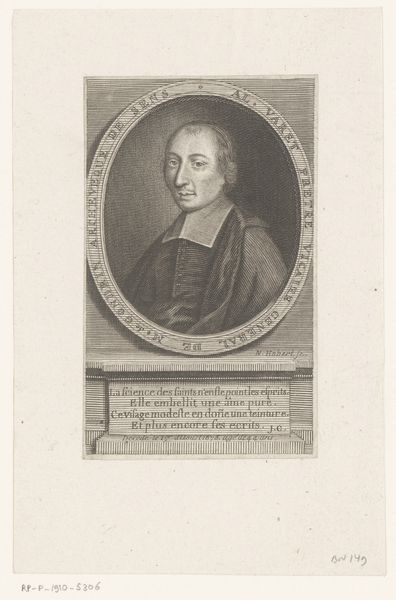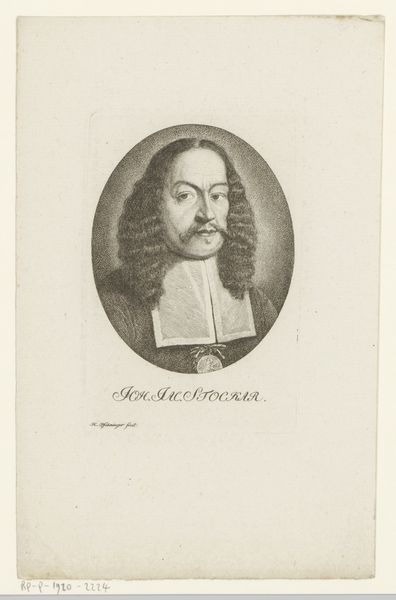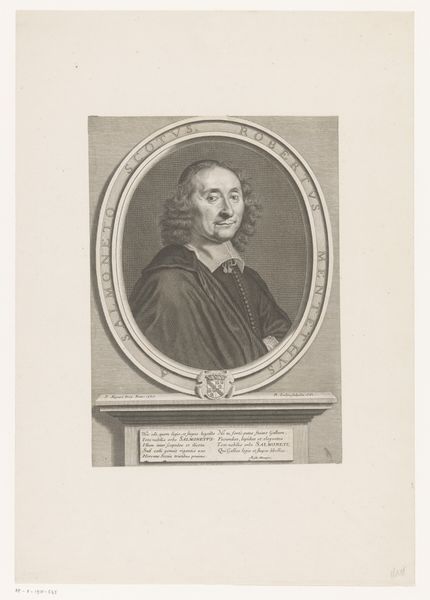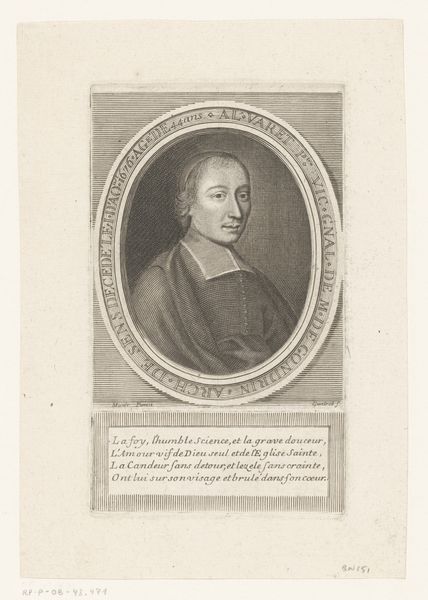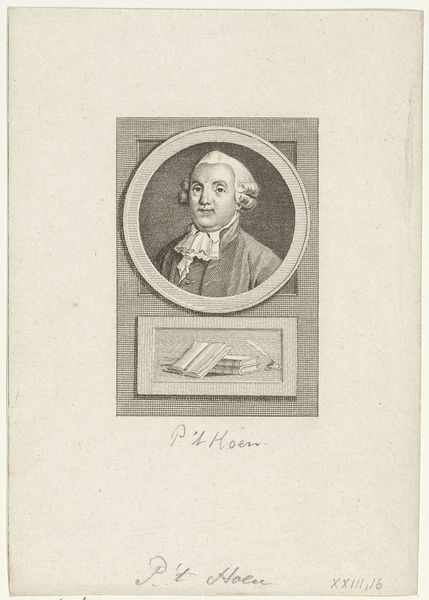
Dimensions: height 128 mm, width 80 mm
Copyright: Rijks Museum: Open Domain
Heinrich Pfenninger captured Karl Friedrich Drollinger’s likeness in this engraving, using symbols of status to convey dignity and importance. The powdered wig, cascade of lace at the neck, and buttoned jacket are all powerful signifiers of wealth and membership within the echelons of eighteenth-century society. Yet these signifiers are not unique to this era. Go back further, and you will see how rulers across time have used costume to declare their status. Think of the elaborate headdresses worn by ancient Egyptian pharaohs, or the rich fabrics donned by Renaissance monarchs. Each article of clothing or jewelry is carefully chosen to communicate power and authority. The wig is a particularly interesting motif to trace. Once worn to cover baldness or thinning hair, it evolved into a fashion statement adopted by the European elite. It became intrinsically linked with notions of wealth and sophistication. Like a mask, it allowed the wearer to assume a certain persona, projecting an image of refinement. This desire for image construction is a recurring theme in art and human behavior. The cyclical nature of symbols reminds us that the past is always present, constantly reshaping and informing our understanding of the world.
Comments
No comments
Be the first to comment and join the conversation on the ultimate creative platform.
